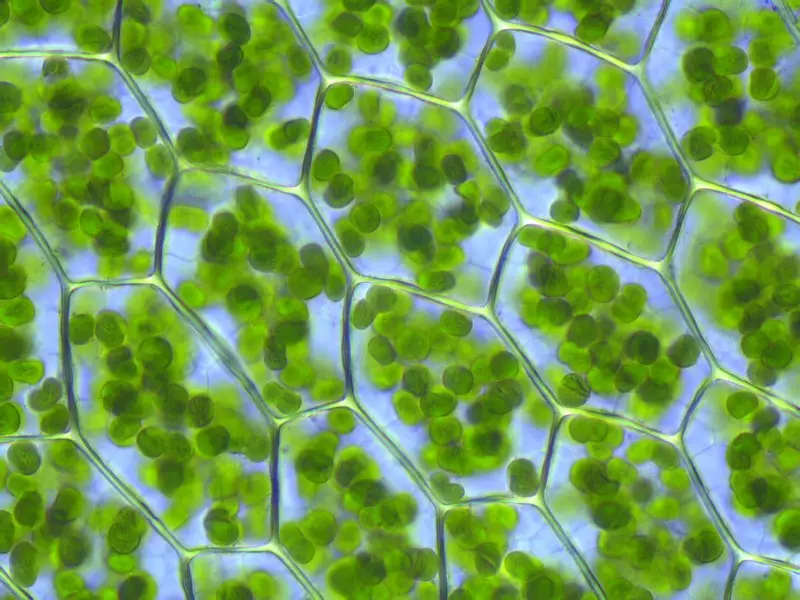Photosynthetic cells rely on the absorption of light to generate energy. When these cells absorb light, packets of energy called photons are transferred between a series of light-harvesting proteins until they reach the photosynthetic reaction center. At this point, the energy is converted into electrons, which are then used to produce sugar molecules. This transfer of energy through the light-harvesting complex is known for its high efficiency, with nearly every absorbed photon generating an electron, a phenomenon called near-unity quantum efficiency.
A recent study conducted by chemists at MIT offers insight into how the proteins in the light-harvesting complex, also known as the antenna, achieve this high level of efficiency. For the first time, the researchers were able to measure the energy transfer between these proteins and discovered that the disorganized arrangement of the proteins actually enhances the efficiency of energy transduction.
According to Gabriela Schlau-Cohen, the senior author of the study and an associate professor of chemistry at MIT, a disordered organization of the light-harvesting proteins is essential for the antenna to function effectively. The researchers found that this disordered arrangement enhances the efficiency of long-distance energy transduction, a crucial process for the antenna’s operation.
Unraveling the Energy Transfer Mechanism
To study how energy moves between light-harvesting proteins, the MIT team focused on purple bacteria, which are commonly used as a model for studying photosynthetic light-harvesting. Within these bacteria, captured photons travel through light-harvesting complexes consisting of proteins and light-absorbing pigments like chlorophyll.
Using ultrafast spectroscopy, a technique that employs short laser pulses to examine events occurring within femtoseconds to nanoseconds, scientists have previously studied how energy moves within a single protein. However, studying the transfer of energy between proteins has proven challenging due to the need for controlled positioning of multiple proteins.
To overcome this challenge, the MIT researchers designed synthetic nanoscale membranes that mimic naturally occurring cell membranes. These membranes, known as nanodiscs, allowed the team to control the distance between two proteins embedded within them. By embedding two versions of the primary light-harvesting protein found in purple bacteria, LH2 and LH3, into the nanodiscs, the researchers created an experimental setup to measure energy transfer between the proteins.
Using the cryo-electron microscope at the MIT.nano facility, the researchers imaged the membrane-embedded proteins and confirmed that their positioning closely resembled that of proteins in native membranes. They also measured the distances between the light-harvesting proteins, which ranged from 2.5 to 3 nanometers.
Since LH2 and LH3 absorb slightly different wavelengths of light, the researchers were able to observe energy transfer between them using ultrafast spectroscopy. They discovered that proteins positioned closely together allowed for faster energy transfer, taking approximately 6 picoseconds for a photon to travel between them. In contrast, proteins spaced farther apart required up to 15 picoseconds for energy transfer.
The efficiency of energy transfer relies on the speed of the transfer, as a longer journey results in more energy loss. Faster conversion of absorbed energy leads to higher efficiency. Therefore, the researchers concluded that the disordered arrangement of proteins in living cells is more efficient compared to a lattice structure.
Implications and Future Research
The finding that disordered organization enhances energy transfer efficiency challenges the assumption that biological systems are inherently disordered. Instead, organisms may have evolved to take advantage of this disordered organization.
Having established the ability to measure inter-protein energy transfer, the researchers plan to further investigate energy transfer between other proteins, such as those in the antenna to the reaction center. They also aim to study energy transfer in antenna proteins found in organisms other than purple bacteria, including green plants.
Understanding the mechanisms behind efficient energy transduction in photosynthetic cells has important implications for various fields, including renewable energy and bioengineering. By unraveling the complexities of energy transfer, scientists can potentially develop more efficient energy conversion systems inspired by nature.


Leave a Reply